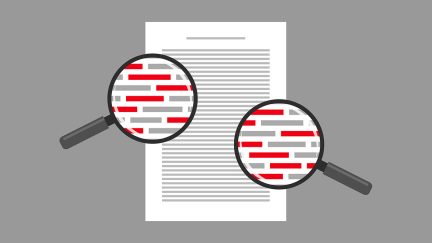Never miss a story — sign up for PLANSPONSOR newsletters to keep up on the latest retirement plan benefits news.
Retirement Plan Issues in Bankruptcy
However, the Employee Retirement Income Security Act (ERISA) and Internal Revenue Code (IRC) have provisions that protect certain retirement plan assets from creditors. Charles F. Plenge, partner at Haynes and Boone, LLP, in Dallas, Texas, pointed out to attendees of the American Society of Pension Professionals & Actuaries 2013 Annual Conference in National Harbor, Maryland, that ERISA § 206(d) says benefits under a pension plan may not be assigned or alienated. The plan document must contain an “anti-alienation provision.” This only applies to pension plans as defined in ERISA § 3(2)(A); it does not apply to owner-only plans.
IRC § 401(a)(13)(A) also contains an anti-alienation provision for qualified plans. ERISA and the IRC protect retirement plan assets from being used to discharge debts.
Rhonda G. Migdail, of counsel at Keightley & Ashner LLP in Washington, D.C., added that in the case of Patterson v. Shumate, the Supreme Court decided the ERISA § 206(d) prohibition against assignment or alienation of pension benefits is an enforceable nonbankruptcy law under Bankruptcy Code § 541(c)(2), so that such plan benefits are excluded from bankruptcy estates. She pointed out that exclusions are different from exemptions, in that for exclusions, the court has no jurisdiction over the disposition of assets, and with exemptions, the debtor has the right to elect to include or not include them in the bankruptcy estate, but the court can approve or disapprove of the choice.
However, the Supreme Court decision also means plan participants cannot discharge plan loans in bankruptcy.
Migdail warned that ERISA/IRC protections do not apply to assets held in individual retirement accounts (IRAs); government plans; most church plans; non-ERISA 403(b) plans and certain nonqualified plans. In addition, exceptions to the anti-alienation provisions include qualified domestic relations orders (QDROs); federal tax levies; federal criminal penalties; and criminal or civil judgments, consent decrees and settlement agreements that may offset retirement plan benefits when plan participants committed fiduciary violations or crimes against the plan.
Migdail added that plans covered by ERISA are not subject to state attachment, garnishment or levy proceedings. However, this does not apply to the same plans listed for which ERISA anti-alienation protections do not apply.
The Bankruptcy Abuse Prevention and Consumer Protection Act of 2005 (BAPCPA) provides a broad exemption for 401(a) plans, 403 plans, 408 and 408A IRAs, 414 plans (governmental and church) and 457 plans. However, for the BAPCPA exemption, certain conditions apply. The plan must have a favorable determination letter effective as of date bankruptcy case is commenced, or if the plan has not received a determination letter, the debtor can show no prior unfavorable determination has been made by a court or the IRS, and the plan is in substantial compliance with any applicable IRC requirements.
Plenge told attendees that amounts distributed from retirement plans are generally no longer protected. IRAs inherited by a spouse are protected, but IRAs inherited by a non-spouse are not protected. This is because IRAs inherited by a spouse are still considered retirement savings because they cannot be distributed until a distributable event occurs. Minimum required distributions and hardship withdrawals are not protected.
On the other hand, the automatic stay of assets does not apply to plan loans and deferral contributions, they can be continued for participants who file bankruptcy.
If a plan sponsor files for bankruptcy, Plenge noted, the tax code and ERISA protect plan assets from the plan sponsor’s creditors under the exclusive benefit rule, which says the plan is to be maintained for the exclusive benefit of plan participants. In addition, amounts in a plan sponsor’s possession, not yet sent to the trust, investment company or recordkeeper, such as loan repayments and deferrals, cannot be touched by the plan sponsor’s creditors.


